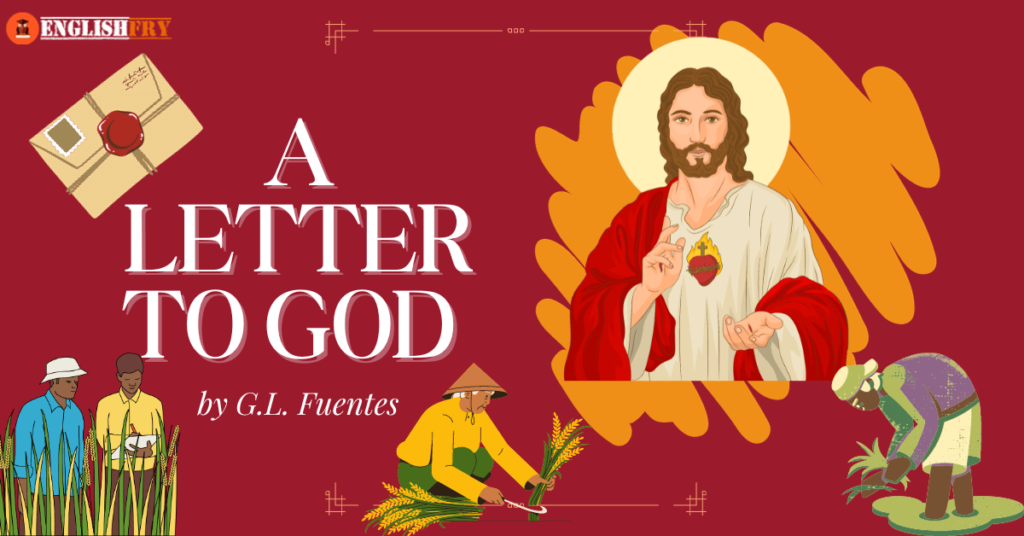John Keats was an English Romantic poet. He was one of the main figures of the second generation of Romantic poets. Although his poems were not generally
well received by critics during his lifetime, his reputation grew after his death, and by the end of the 19th century, he had

become one of the most beloved of all English poets. He had a significant influence on a
diverse range of poets and writers.
Table of Contents
ToggleOriginal Poem
On the Grasshopper and Cricket
The poetry of earth is never dead:
When all the birds are faint with the hot sun,
And hide in cooling trees, a voice will run
From hedge to hedge about the new-mown mead,
That is the grasshopper’s – he takes the lead
In Summer luxury – he has never done
With his delights, for when tired out with fun
He rests at ease beneath some pleasant weed.
The poetry of earth is ceasing never:
On a long winter evening when the frost
Has wrought a silence, from the stone there shrills
The cricket’s song, in warmth increasing ever,
And seems to one in drowsiness half lost;
The grasshopper’s among some grassy hills.
by John Keats
On the Grasshopper and Cricket Summary Class 8 English
Here, i will dymistify On the Grasshopper and Cricket summary class 8 english in details. In the poem ‘On the Grasshopper and Cricket’, the poet John Keats celebrates the tune of the Earth.
He finds beauty in warm summer as well as inside the cold winter. Here, in this poem, the grasshopper is a symbol of warm summer season and cricket is a symbol of bloodless winter. The poet says that the music of nature or earth is constantly alive whether or not it is hot summer time or cold and bleak winter.
During the hot summer season, all of the making a song birds are tired and take relaxation beneath the shady branches of timber. But even though they don’t sing the tune of nature is going on. We can still listen the voice of the grasshopper who runs from hedge to hedge. He keeps making a song tirelessly and when tired rests beneath some weed.
A grasshopper incorporates on the responsibility of singing the everlasting song of nature. During summers, he is a fun-loving and joyful creature and is by no means achieved along with his delights.
During the bloodless winter season also, the birds are silent. There is utter silence at the frosty winter days. But the earth has its personal way of expressing pride and joys. The song of a cricket can be heard which breaks this silence.
He sings from the stones but no longer from the bushes. His music appears to be growing the warm temperature every moment. People are able to hear it sitting in their homes. However, the poet says that to a person who is half of-asleep, it is able to appear like a grasshopper’s song coming from the grassy hills.
Thus, we can say that the grasshopper and the cricket, two tiny bugs, carry out a large obligation. They keep on with nature’s non-stop and everlasting tune regardless of the extreme climates. The poet has as a result personified them. It is accordingly a symbolic poem. Here, the grasshopper and the cricket are a symbol of the steady joyous temper of nature.
Conclusion of On the Grasshopper and Cricket
The poem teaches us that we shall be completely satisfied and exceptional no matter what are the conditions in our existence. With this mind-set, we will effortlessly triumph over all the limitations in lifestyles.
Summary in Hindi

‘ऑन द ग्रासहॉपर एंड क्रिकेट’ कविता में कवि जॉन कीट्स पृथ्वी की धुन का जश्न मनाते हैं। वह गर्म गर्मी के साथ-साथ ठंडी सर्दी में भी सुंदरता ढूंढता है। यहाँ, इस कविता में, टिड्डा गर्म गर्मी के मौसम का प्रतीक है और क्रिकेट रक्तहीन सर्दियों का प्रतीक है। कवि का कहना है कि प्रकृति या पृथ्वी का संगीत लगातार जीवित रहता है चाहे वह गर्म गर्मी का समय हो या ठंडी और निराशाजनक सर्दी हो। गर्मी के मौसम में, गाना गाने वाले सभी पक्षी थक जाते हैं और पेड़ों की छायादार शाखाओं के नीचे आराम करते हैं।
लेकिन उनके न गाने पर भी प्रकृति का राग चल रहा है। हम अभी भी टिड्डे की आवाज सुन सकते हैं जो एक बाड़ से दूसरे बाड़ की ओर दौड़ता है। वह बिना थके गाना बनाता रहता है और जब थक जाता है तो किसी घास-फूस के नीचे आराम करता है। एक टिड्डा प्रकृति के शाश्वत गीत को गाने की जिम्मेदारी लेता है। गर्मियों के दौरान, वह मौज-मस्ती करने वाला और खुश रहने वाला प्राणी होता है और अपनी मौज-मस्ती से कभी भी संतुष्ट नहीं होता है। हनी ड्यू कविता के अतिरिक्त सारांश यहीं पढ़ें रक्तहीन सर्दी के मौसम में भी पक्षी खामोश रहते हैं।
ठिठुरती सर्दी के दिनों में एकदम सन्नाटा रहता है। लेकिन पृथ्वी के पास गर्व और खुशी व्यक्त करने का अपना निजी तरीका है। इस सन्नाटे को तोड़ता हुआ झींगुर का गीत सुनाई देता है। वह पत्थरों से गाता है, लेकिन अब झाड़ियों से नहीं। उनका संगीत हर पल गर्म तापमान को बढ़ाता नजर आता है। लोग इसे अपने घरों में बैठे-बैठे सुन पा रहे हैं. हालाँकि, कवि का कहना है कि जो व्यक्ति आधी नींद में है, उसे यह घास की पहाड़ियों से आ रहे टिड्डे के गीत की तरह प्रतीत हो सकता है।
इस प्रकार, हम कह सकते हैं कि टिड्डा और झींगुर, दो छोटे कीड़े, एक बड़ा दायित्व निभाते हैं। वे विषम जलवायु की परवाह किए बिना प्रकृति की अविराम और शाश्वत धुन में लगे रहते हैं। परिणामस्वरूप कवि ने उनका मानवीकरण किया है। तदनुसार यह एक प्रतीकात्मक कविता है। यहां टिड्डा और झींगुर प्रकृति के स्थिर आनंदमय स्वभाव के प्रतीक हैं। ग्रासहॉपर और क्रिकेट पर निष्कर्ष कविता हमें सिखाती है कि हमारे अस्तित्व में चाहे कैसी भी परिस्थितियाँ हों, हम पूरी तरह से संतुष्ट और असाधारण रहेंगे। इस मानसिकता के साथ, हम जीवनशैली की सभी सीमाओं पर सहजता से विजय पा लेंगे।
Summary in Assamese

‘অন দ্য গ্ৰাছপাৰ এণ্ড ক্ৰিকেট’ কবিতাটোত কবি জন কিটছে পৃথিৱীৰ সুৰ উদযাপন কৰিছে। উষ্ণ গ্ৰীষ্মৰ লগতে ঠাণ্ডা শীতৰ ভিতৰতো তেওঁ সৌন্দৰ্য্য বিচাৰি পায়। ইয়াত এই কবিতাটোত ফৰিং উষ্ণ গ্ৰীষ্মকালৰ প্ৰতীক আৰু ক্ৰিকেট ৰক্তহীন শীতৰ প্ৰতীক। কবিয়ে কৈছে যে গৰমৰ সময় হওক বা ঠাণ্ডা আৰু অন্ধকাৰ শীত হওক বা নহওক প্ৰকৃতি বা পৃথিৱীৰ সংগীত অহৰহ সজীৱ হৈ থাকে।
গৰমৰ দিনত গীত এটা বনোৱা সকলো চৰাই ভাগৰি পৰে আৰু কাঠৰ ছাঁয়াময় ডালবোৰৰ তলত জিৰণি লয়। কিন্তু তেওঁলোকে গান গাই নাথাকিলেও প্ৰকৃতিৰ সুৰ চলি আছে। হেজৰ পৰা হেজলৈ দৌৰি যোৱা ফৰিংটোৰ মাত আমি এতিয়াও শুনিব পাৰো। তেওঁ অক্লান্তভাৱে গীত এটা বনাই থাকে আৰু ভাগৰুৱা হ’লে কোনোবা অপতৃণৰ তলত জিৰণি লয়। এটা ফৰিং প্ৰকৃতিৰ চিৰন্তন গীত গোৱাৰ দায়িত্বৰ ওপৰত অন্তৰ্ভুক্ত। গ্ৰীষ্মকালত তেওঁ এজন মজাপ্ৰেমী আৰু আনন্দময় জীৱ আৰু তেওঁৰ আনন্দৰ সৈতে কোনো কাৰণতে লাভ কৰা নহয়।
ইয়াতেই অতিৰিক্ত মৌ শিশিৰ কবিতাৰ সাৰাংশ পঢ়ক তেজবিহীন শীতকালতো চৰাইবোৰ নিমাত হৈ থাকে। শীতৰ হিমশীতল দিনবোৰত একেবাৰে নিস্তব্ধতা। কিন্তু পৃথিৱীৰ গৌৰৱ আৰু আনন্দ প্ৰকাশৰ ব্যক্তিগত পদ্ধতি আছে। এটা ক্ৰিকেটৰ গান শুনা যায় যিয়ে এই নিস্তব্ধতা ভাঙি পেলায়। শিলৰ পৰা গান গায় কিন্তু জোপোহাৰ পৰা আৰু নহয়। তেওঁৰ সংগীতে প্ৰতি মুহূৰ্ততে উষ্ণ উষ্ণতা বৃদ্ধি কৰা যেন লাগে। মানুহে ঘৰত বহি শুনিবলৈ সক্ষম হৈছে। অৱশ্যে কবিয়ে কৈছে যে আধা টোপনি যোৱা ব্যক্তিৰ বাবে ই ঘাঁহনিৰে ভৰা পাহাৰৰ পৰা অহা ফৰিংৰ গীতৰ দৰে দেখা দিবলৈ সক্ষম হয়।
এইদৰে আমি ক’ব পাৰো যে ফৰিং আৰু ক্ৰিকেট, দুটা ক্ষুদ্ৰ কীট-পতংগই এটা বৃহৎ বাধ্যবাধকতা পালন কৰে। চৰম জলবায়ু যিয়েই নহওক কিয়, তেওঁলোকে প্ৰকৃতিৰ অবিৰত আৰু চিৰন্তন সুৰত আগবাঢ়ি থাকে। কবিয়ে ফলস্বৰূপে সেইবোৰক মূৰ্ত কৰি তুলিছে। সেই অনুসৰি ই এক প্ৰতীকী কবিতা। ইয়াত ফৰিং আৰু ক্ৰিকেট প্ৰকৃতিৰ স্থিৰ আনন্দময় স্বভাৱৰ প্ৰতীক।
অন দ্য গ্ৰাছপাৰ আৰু ক্ৰিকেটৰ সামৰণি কবিতাটোৱে আমাক শিকাইছে যে আমাৰ অস্তিত্বৰ যি পৰিস্থিতি নহওক কিয় আমি সম্পূৰ্ণ সন্তুষ্ট আৰু ব্যতিক্ৰমী হ’ম। এই মানসিকতাৰে আমি জীৱনশৈলীৰ সকলো সীমাবদ্ধতাৰ ওপৰত অনায়াসে জয়লাভ কৰিম।
On the Grasshopper and Cricket extra questions
- What happens to birds during summer?
The birds become faint and quiet under the hot sun.
- Where do the birds to avoid the heat of the sun?
The birds hide themselves under the shade of the trees in order to protect themselves
from the heat of the sun.
- What happens during winter?
The frost casts complete silence over all aspects of nature during winter.
- Which words or phrases suggest a sense of relief from the heat of summer in
stanza 1?
‘Cooling trees’ and ‘pleasant weeds’ offer a sense of relief from the heat of summer in
stanza 1.
- Who are half lost in drowsiness and why?
During winter, people get half lost in drowsiness because of the weather that spreads a
chilling numbness.
- Discuss the common features between the grasshopper and the cricket?
Both the grasshopper and the cricket are the representative voices of nature’s music or
poetry. Both offer a soothing effect the extremities of climate.
The grasshopper’s song balances the extreme heat during the summer by providing music that is comforting and pleasing. The cricket does the same during winter.
- Why does the poet believe that the poetry of earth is never dead?
The poet believes that poetry of nature is never ending or never ceasing because it
continues to offer balm over its inhabitants round the year, irrespective of change in seasons,
change in day and night and so on. There are so many soothing sounds in nature that provide
relief to people from the harsh climate.
- Which element of nature has been personified in these lines?
(a) Winter (b) Frost (c) Silence (d) wrought
Ans. (b) Frost
- Who does the cricket’s song resemble to people lost in drowsiness?
The grasshopper
- What happens during winter?
During winter, hardly anyone steps out and there is silence everywhere.
- Who is lost in drowsiness?
The people are lost in drowsiness, owing to the extreme cold during winter.
- Why does the cricket’s song spread warmth?
The cricket’s song pours a soothing balm, when everything around is encompassed with
death like silence.
- The word cooling means……………. .
Ans. (a) comforting
- Why do the birds become faint?
The birds become faint because of the heat of the hot sun.
- What does the poet mean by ‘the poetry of earth’?
By the phrase, ‘the poetry of earth’, the poet means the sounds of the birds, the sounds
that are abundantly found in nature.
- What happens during winter?
During winter, hardly anyone steps out and there is silence everywhere.
- Who is lost in drowsiness?
The people are lost in drowsiness, owing to the extreme cold during winter.
- Why does the cricket’s song spread warmth?
The cricket’s song pours a soothing balm, when everything around is encompassed with
death like silence.
On the grasshopper and cricket mcq with answers
- What does the poet claim about the poetry of earth in the poem?
- a) It is dead in winter
- b) It is everlasting
- c) It is silent in summer
- d) It is confined to meadows
Correct Answer: b) It is everlasting
- Which insect is highlighted as a symbol of summer luxury in the poem?
- a) Cricket
- b) Grasshopper
- c) Butterfly
- d) Bee
Correct Answer: b) Grasshopper
- What does the Grasshopper do when tired out with fun in the poem?
- a) Sleeps in trees
- b) Rests beneath a pleasant weed
- c) Sings louder
- d) Flies away
Correct Answer: b) Rests beneath a pleasant weed
- In the poem, when do the birds hide in cooling trees?
- a) Winter evenings
- b) Hot summer days
- c) Frosty nights
- d) New-mown meadows
Correct Answer: b) Hot summer days
- What is the Grasshopper’s role in the summer luxury according to the poet?
- a) He follows other insects
- b) He takes the lead
- c) He sleeps all day
- d) He remains silent
Correct Answer: b) He takes the lead
- What does the Cricket’s song seem to do on a lone winter evening in the poem?
- a) Increase the frost
- b) Break the silence
- c) Cause drowsiness
- d) Hide in the stove
Correct Answer: b) Break the silence
- According to the poem, where does the Grasshopper rest at ease after being tired?
- a) Meadows
- b) Trees
- c) Stove
- d) Pleasant weed
Correct Answer: d) Pleasant weed
- What does the Grasshopper’s voice do from hedge to hedge in the poem?
- a) Sleeps
- b) Runs
- c) Flies
- d) Hides
Correct Answer: b) Runs
- What is the Cricket’s song associated with in the poem?
- a) Winter
- b) Summer
- c) Meadows
- d) Hills
Correct Answer: a) Winter
- Which insect’s song is described as increasing in warmth ever in the poem?
- a) Butterfly
- b) Cricket
- c) Bee
- d) Grasshopper
Correct Answer: b) Cricket
- When does the Grasshopper take the lead in summer luxury according to the poem?
- a) Frosty nights
- b) Hot summer days
- c) Lone winter evenings
- d) New-mown meadows
Correct Answer: b) Hot summer days
- What does the Grasshopper’s voice do about the new-mown mead in the poem?
- a) Sleeps
- b) Runs
- c) Hides
- d) Flies
Correct Answer: b) Runs
- According to the poet, where does the Cricket’s song shrill from on a lone winter evening?
- a) Stove
- b) Trees
- c) Meadows
- d) Hills
Correct Answer: a) Stove
- What does the Grasshopper do in summer luxury according to the poem?
- a) Sleeps all day
- b) Rests at ease beneath some pleasant weed
- c) Hides in cooling trees
- d) Sings in winter evenings
Correct Answer: b) Rests at ease beneath some pleasant weed
- In the poem, what happens to the poetry of earth on a lone winter evening?
- a) It ceases forever
- b) It shrills in the stove
- c) It hides in cooling trees
- d) It is never dead
Correct Answer: a) It ceases forever
- According to the poem, what is the Grasshopper’s role in summer luxury?
- a) Follows other insects
- b) Takes the lead
- c) Sleeps all day
- d) Remains silent
Correct Answer: b) Takes the lead
- When do the birds hide in cooling trees in the poem?
- a) Frosty nights
- b) Hot summer days
- c) Lone winter evenings
- d) New-mown meadows
Correct Answer: b) Hot summer days
- What is the Grasshopper’s voice associated with in the poem?
- a) Winter
- b) Summer
- c) Meadows
- d) Hills
Correct Answer: b) Summer
- According to the poem, what has the frost wrought on a lone winter evening?
- a) Silence
- b) Warmth
- c) Meadows
- d) Hills
Correct Answer: a) Silence
- Where does the Cricket’s song seem to one in drowsiness half lost in the poem?
- a) Stove
- b) Trees
- c) Meadows
- d) Hills
Correct Answer: b) Trees
Founder of Englishfry.com, a captivating and knowledge-driven blog & Founder of Android app/website Studyfunnel.com, an online Mock Test Series Portal. With a wealth of experience spanning over 16+ years, he has excelled as an Ex-Asst.Professor, Teacher, Amazon published author, Website Developer, Graphic Designer,Blogger,Poet, and Creative academic content writer publisher of 4 academic books. His tryst in Literature helped him realize his love for writing and telling stories. A tech-savvy language nerd by day and, a passionate writer by night, he now translates his experiences into tales of wisdom served with a side of humor.His widely recognized profound insights ,captivating writing style of weaving words make him contribute to prestigious publications and a sought-after authority in the field that transport readers to extraordinary worlds.








